 Companies often include motivational speakers in their training systems, and a good motivational speaker can spark some fresh thinking and bring energy into the program.
Companies often include motivational speakers in their training systems, and a good motivational speaker can spark some fresh thinking and bring energy into the program.
However, these speeches will not be a cure-all for your sales team.
Unfortunately, even the most inspiring motivational speakers cannot transform a low-Drive person into a high-Drive person.
Since only 15% of the general population actually have the skills necessary to succeed in sales, it is imperative to manage your expectations ahead of time.
Why Motivational Speeches Cannot Help Low-Drive Employees
Drive is unteachable after adulthood because it is developed through an intense combination of genetic makeup and years of environmental influence while our minds are young and impressionable.
To believe a speaker to come in and change those brain pathways and behavior in a few hours, or at all, for that matter, is not a realistic expectation nor is that notion supported by research.
To the contrary, research actively shows that motivational speaking does not change most behavior for more than a few days. Teachable skills are rarely transferable, let alone those hard-wired personality characteristics.
Less than 20% of the population can be developed into strong employees, and that is with a consistent push to develop your employees. Every sales manager has been frustrated dealing with untrainable employees, and a motivational speech will not likely fix those salespeople.
What Motivational Speeches Can Do
 Leadership is responsible for their team’s morale. Being an inspiration to your sales team is fundamental to improving employees’ attitudes.
Leadership is responsible for their team’s morale. Being an inspiration to your sales team is fundamental to improving employees’ attitudes.
What motivational speakers can do is motivate the salespeople who are already susceptible to pushing forward in their careers with blind ambition.
In other words these speeches will help the people in your group who are already high in Drive. They are the salespeople who are eager to try anything and everything to achieve and to compete, so a good speaker can fire them up and provide great inspiration because they are singing to the choir and reinforcing those positive behaviors.
Your low-Drive folks may also enjoy the speech, and you may even see a temporary uplift in performance, but research shows that their behavior will revert back to baseline quickly. The hurdle for these employees is that they are not hard-wired to become strong salespeople. Speeches should not be aimed at these employees. By hiring a low-Drive salesperson, you are already experiencing diminishing returns on your talent investments.
Delivering a Motivational Speech
A Well-Structured Speech
Whether your speech is designed to fix employee morale or prepping employees before an important sales campaign, a speech delivered by the manager can be inspirational and remind your employees why they want to work with you.
There is an old adage when structuring speeches that says to tell your audience what you will say during your talk, say those things, then rehash the important elements of the speech. In other words, a good speech has a strong beginning, middle and end.
Choose Your Topics Carefully
When crafting the content, keep in mind your audience. These are salespeople, prone to high energy and extroverted activity. Your high-Drive salespeople want to hear that the sky is the limit.
Having all members of your team take a sales assessment can help dictate important content for your speech. Knowing what is important to your team members and what they respond best to can help you develop your speech into something that will actually resonate with your employees.
Popular topics among high-Drive salespeople often include persuasiveness, organization or relationship building.
Speak Directly to Your Audience
Remember what motivates your employees. Get them engaged. Audience participation will increase the amount of content the team absorbs.
Think about the best motivational speeches you have heard. YouTube has hundreds of videos to watch for inspiration. Get a sense of how flow and vocal cadence influences the audience.
Remember that simple speeches are best. You are not giving a speech to show how many books you have read. You are trying to deliver a message.
Beginning speakers may want to take note from Alan Monroe, a researcher who introduced five steps to engaging your audience.
- Attention. First you want to draw in your audience with a story, powerful detail or major statistic relevant to the sales team.
- Need. Raise awareness to a problem or the need to rise to a challenge by pointing out that the current state of the team has opportunity for improvement. Any statistics or data that may help reinforce the need (or add urgency!) is really helpful for this step. You want to show how the problem affects the sales team, individually or as a whole.
- Solve the problem. Here you want to elaborate on the facts and explain in detail what steps your salespeople can take to overcome a problem. Use examples of previous situations that were effective and how they may apply to your need. By now your high-Drive employees will be salivating, ready to deploy their skills to the challenge.
- Visualization. Explain what will happen if nothing changes after the speech, namely how their sales or commission will stay stagnant or decline. Staying realistic and relatable about the future incites desire. Those successful in sales got that way by constantly striving to be the best, so painting a picture of possible failure will light a flame under their britches.
- Call to action. In detail, summarize the solution to the need and how each salesperson on the team can contribute to success. It is important not to overwhelm your employees. A daunting call to action can curb success before your employees even get the chance to make a difference.
Consider Outsourcing Your Speaker
 Your other option is to find your speaker elsewhere. Be mindful of what has motivated your salespeople in the past and the speaker’s delivery style. If your team is hands-on, it pays to find someone who will use activities to deliver their message.
Your other option is to find your speaker elsewhere. Be mindful of what has motivated your salespeople in the past and the speaker’s delivery style. If your team is hands-on, it pays to find someone who will use activities to deliver their message.
You want to really engage your high-Drive salespeople. If you have not already tested your employees, consider using a sales assessment to get a feel for the team’s needs, strengths and focus.
Give the speaker your employees’ triggers – those nuances for success your employees often exhibit. This will be fuel for the speaker to deliver a more poignant message that sticks with your sales team longer.
It is also advantageous to search for speakers who primarily talk to sales audiences. They will have better crowd-reading instincts that allow them to adjust the talk based on the energy in the room.
Additionally, it is helpful to give your sales team some background information on the incoming speaker prior to the day of the presentation. Include any noteworthy accolades and how they relate to your industry to really get the team looking forward to the event (rather than thinking of the number of pitches they could be making with that time instead).
So get out there and start setting up great speeches. Let them fire up your team and stir up creativity and energy.
Just be sure your goals are realistic so your expectations and investment match the results you are seeking. If you ask your team to move mountains, do not be upset when the low-Drive salespeople ask if molehill is “good enough.”
 Account Login
Account Login






